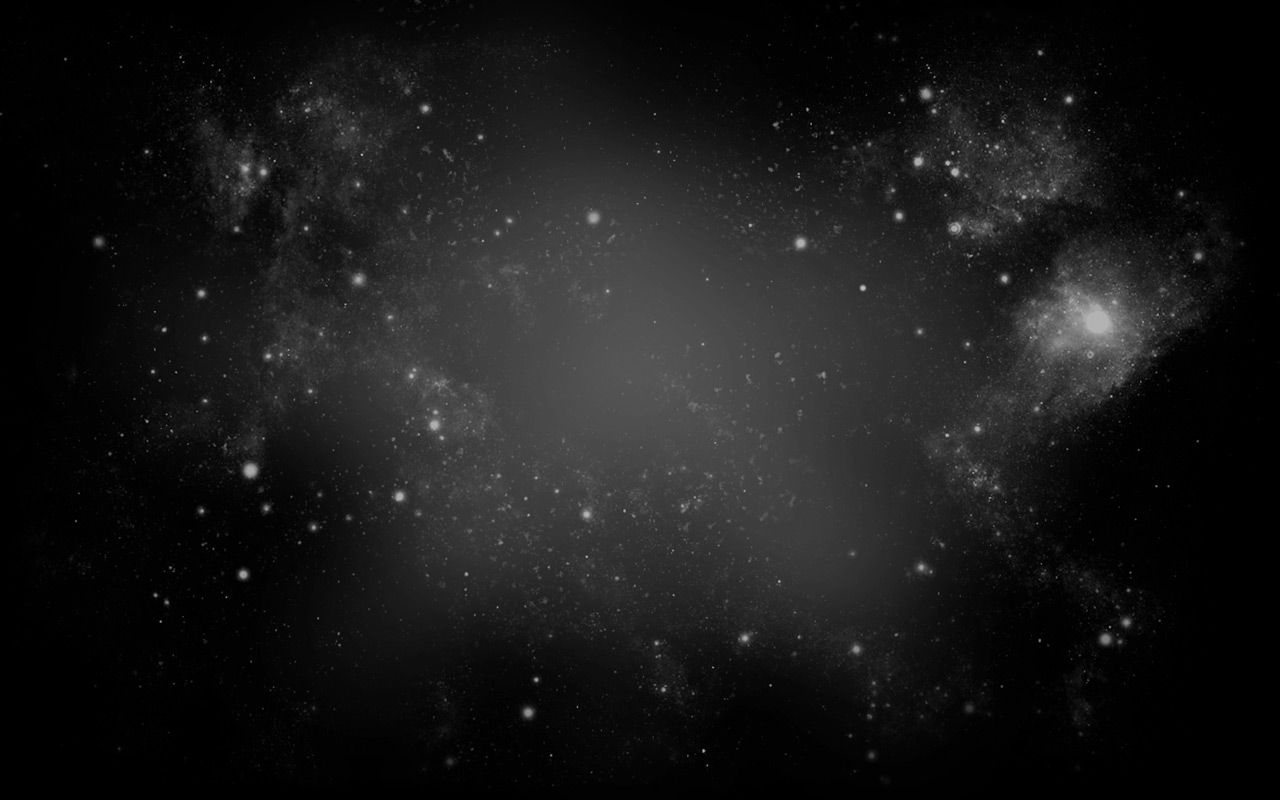

2028: The Great Return
Orbital Mechanics
&
Propulsion analysis
Assumptions
The following assumptions were made to complete this analysis
-
34 metric ton lander
-
Engines can be re-ignited
-
The launch vehicles will be in production by the launch date
-
At landing, the craft will have ~50% fuel left
Most relevant values
-
Specific Impulse
-
Dry Mass
Necessary ΔV
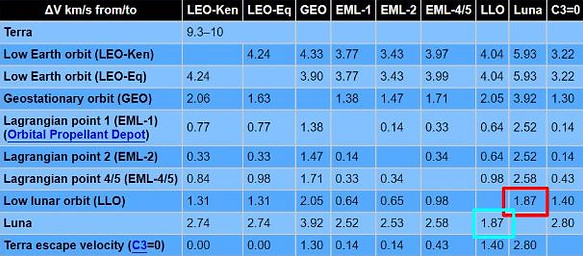
-
LLO to Lunar Surface: 1.87km/s
-
Lunar Surface to LLO: 1.87km/s
-
Minimum Delta V needed: 3.84km/s
-
Factor of Safety = 4.6/3.84 = 1.2
-
Delta V chosen for this module: 4.6km/s
Engine Options & Decision
Requirements:
-
Non-Liquid Hydrogen Engine
-
Reignitable
-
Easy long term fuel storage
-
Made domestically
-
Foreign-made engines could be unavailable during a time of tension with the source country
-
-
The thrust to weight ratio at landing will be more than 1
Engines that meet the requirements
-
Lightning 1
-
Aestus II
-
Gamma II

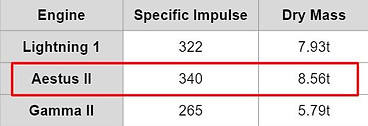
The Aestus II was ultimately chosen as the engine of choice for the landing module since it has the highest specific impulse across all the options while being able to hold the most dry mass. The group was also highly interested in its low energy requirements the prevent boil off and how easy it was to re-ignite, as it could prove to be worthwhile to take advantage of that technology to reduce overall cost of fuel tanks,
There are some negatives that accompanies this model of engine, specifically with the fuel it uses and it's maximum thrust value. The highly toxic fuel and exhaust caused the most hesitation prior to selection, but astronauts will not be in contact with it, as the engines will not fire without all members of the mission inside the airlocks of the module. The low thrust values proved to not be as much of an issue as once thought, as it provides more than enough to depart from the lunar surface and travel through the vacuum of space on it's way back to the Gateway.
Lander Characteristics
Based on the decisions made for the module engines, several characteristics were decided and calculated
Fully fueled weight (Wet): 34 metric tons
Fully empty weight (Dry): 8.56 metric tons
Delta V: 4600m/s
Fuel Weight: 25.44 metric tons
Specific Impulse: 340s
Fuels: N2O4 and Monomethylhydrazine
Program Stage: Launch
The first launch is on schedule to occur in mid-2028 from Cape Canaveral in Florida, located at the Kennedy Space Center complex.
Due to delays in the development of the secondary core of NASA's SLS rocket, the group opted for the current industry standard for reusability; the Falcon Heavy, manufactured by SpaceX. This rocket provides multiple payload options and is optimal when considering the sustainable prerogative that NASA has been looking for.
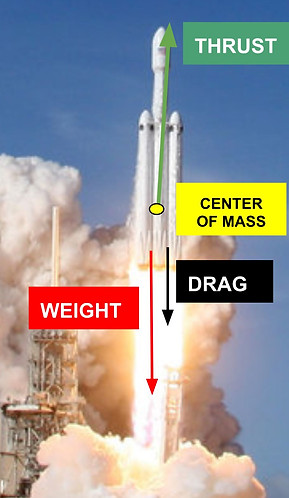
Program Stage: Interspace Travel to Moon
To accurately calculate to optimal orbit to the Moon, GMAT (General Mission Analysis Tool) was used.
The landing sequence would begin with the departure from the Gateway in Near Rectilinear Halo Orbit (NHRO) and utilization of the conceptualized cis-lunar tug to travel from NHRO to Low Lunar Orbit (LLO) at 100km above the moon's surface. Once released from the tug, the module's onboard thrusters and engines would begin firing to achieve a smooth landing within 4 degrees of the lunar south pole. The south pole was chosen as the landing site by NASA's recommendation, as it is easier to repeatedly land at a polar position than an equatorial one.

Program Stage: Surface Contact
Once the craft arrives to the sphere of influence of the moon, the landing sequence will begin:
-
Enter a Near Rectilinear Halo Orbit
-
STELLA module dropped off
-
Proceed to Low Lunar Orbit
-
Normalize its orbit at 250km by reducing the eccentricity to 0, and creating an almost perfectly circular orbit. This normalization will avoid lunar gravitational anomalies.
-
-
Proceed to orbit to the North Pole
-
Lower the periapsis of the orbit in the South Pole to 1km of altitude
The module will proceed to lower its altitude until reaching 1km, at this point the landing maneuvers will begin. The X and Y angular momentums will be cancelled only leaving the vertical component. The touchdown maneuver chosen is a maximum powered burn that will cancel all moments at 100m off the ground. This will allow for a very controlled drop to the ground using a fraction of the total thrust provided by the engine.
Final stage of the mission is the orbital reentry to the lunar orbit. This is one of the simplest stages, as it will be comprised of a raising apoapsis stage and a normalization stage. The raising apoapsis stage is a single stage burn normal to the surface of the moon until an apoapsis of 250km is reached. Once the craft reaches the apoapsis, it will fire in the direction of the momentum of the craft (Prograde) until a stable orbit is reached.
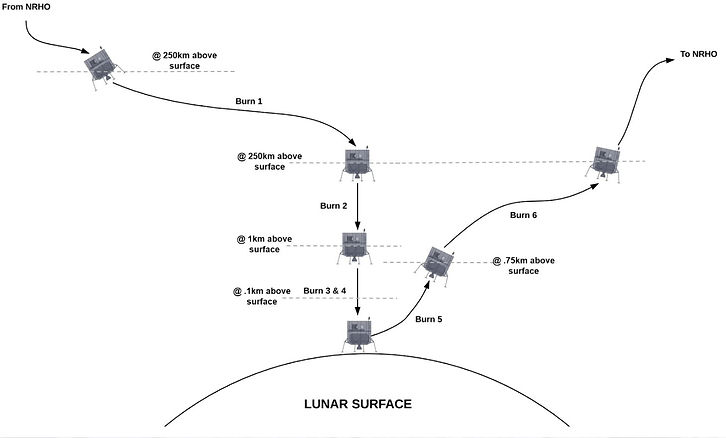
-
Burn 1: Normalize to circular orbit
-
Burn 2: Lower Orbit to 1km
-
Burns 3&4: Cancel X and Y momentums and controlled drop
-
Burn 5&6: Raise Apoapsis to 250km, normalize to circular orbit and dock

